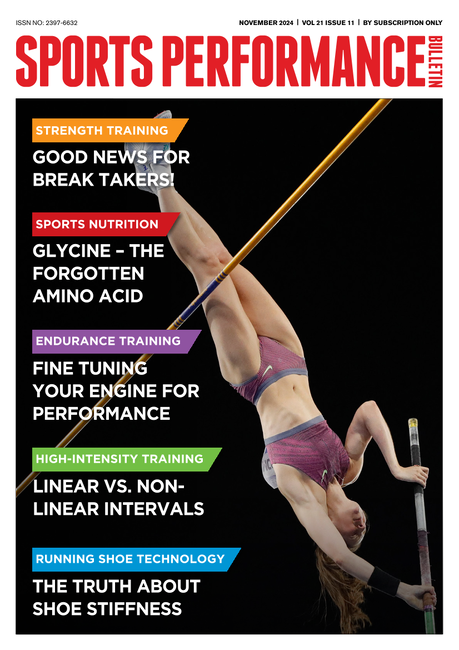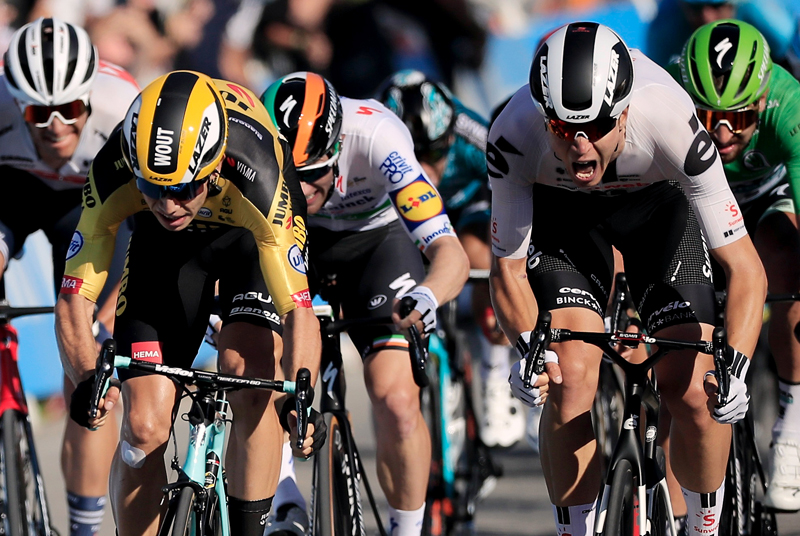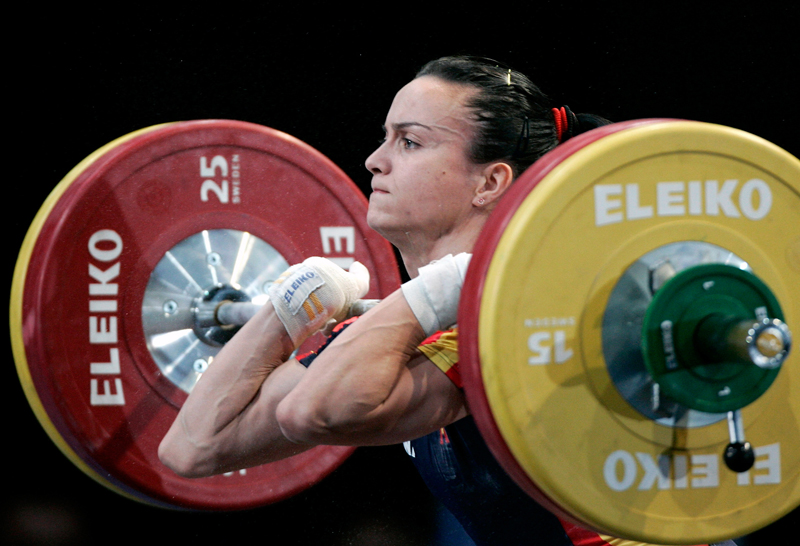You are viewing 1 of your 1 free articles. For unlimited access take a risk-free trial
Core training programme - part 1
Follow our four-part guide to core training to maximise your sports performance
Follow our four-part guide to core training to maximise your sports performance
Your core (back and abdominal muscles) are key to optimum sports performance. This area acts as a transmission, allowing your limbs to exert maximum force and power. A weak core can lead to reduced sports performance, as it may not allow you to direct all the power you’re generating where you need – through the track, for example, if you are a sprinter. Lack of core strength can also increase your risk of injury. It can also reduce your ability to withstand challenges, knocks and hits in football, rugby and other contact sports.
Core stability for rehabilitation and sport
If you have ever sustained a sports injury involving damage to, for instance, your back, groin, hamstrings or knee, your sports therapist or physiotherapist will probably have given you some core stability exercises to do as part of your rehabilitation work. Within the repertoire of core stability there is a huge range of exercises, the suitability of which will vary according to the injury and therapeutic needs of each individual. The same variability applies to the selection of core exercises for sports conditioning.
There are three major groups of exercises:
- Those focusing on getting the small deep-lying stabilising muscles (such as the lower abdominals and deep spinal muscles) to work properly. These exercises are often adapted from clinical Pilates.
- Static bodyweight exercises that concentrate on developing stability (through held positions) and/or strength endurance (the ability of muscles to perform repeated contractions).
- Dynamic strength building exercises for the main movement muscles of the trunk, often performed on the floor or a Swiss ball or using a pulley machine.
Core training programmes
The core training programme that follows over this and the next three parts is designed to reduce injury and maintain physical and mental stimulation and contribute to improved sports performance.
Some of the exercises involve resistance, some bodyweight, and some are simply about muscle recruitment. Within each work out the difficulty of exercises varies, although the general level progresses from issue to issue. Coaches, therapists and athletes should set the number of sets and repetitions for each exercise according to the normal principles of training, fatigue and overload (see progressive overload below and tables 1, 2 and 3). They should also account for prior level of training, any injuries and time in the training year.
Progressive overload
Progressive overload is one of the key principles of training. You start off exercising at a low and manageable level and, providing you allow enough time between sessions for recovery, this initial training dosage will produce a positive training response. After a certain time your body adapts, so you can then increase the dosage to produce further increases in fitness. If there is no progression then your fitness level will plateau.
Table 1: Example of a progressive overload programme
| Week | 1 & 2 | 3 & 4 | 5 & 6 | 7 & 8 |
| Reps & Sets | 2 sets x 5 reps | 3 sets x 5 reps | 3 sets x 8 reps | 3 sets x 10 reps |
| Frequency | 2 x per week | 2 x per week | 2 x per week | 2 x per week |
Table 1 shows a simple volume progression. The goal at the start is to learn the exercises correctly. In this example, you perform only 2 sets x 5 reps twice a week for weeks 1 and 2, to ensure the muscles and tendons involved in the exercise are not overloaded too much too soon. During weeks 3 and 4 you complete 50 per cent more reps by adding another set (3 x 5). Over the next 4 weeks, you build up to 3 sets x 10 reps, which is three times the original dosage.
Strength endurance
This training progression will develop strength endurance, which is why the emphasis is on building up the number of repetitions over time rather than increasing the amount of weight (if applicable to the exercise).
Table 2: Guidelines for developing strength endurance
| Repetitions | 10-20 or 10-90 second holds per set (for held positions |
| Sets | 2-4 |
| Intensity | Use light weights (where applicable) that result in fatigue during the last few reps of each set or discomfort during the final seconds of the hold. |
| Rest | 30-60 seconds between sets |
| Frequency | 2-5 x per week |
| Phase duration | 4-8 weeks |
It will take 4-8 weeks to develop a significant improvement in strength endurance. At the start choose an appropriate resistance or length of hold. In terms of weights exercises, once you can do 20 reps you should increase the resistance and drop the number of sets. With isometric (held) exercises you should progress to 90-second holds.
Strength training
For developing strength (the ability to lift increasingly heavier loads) the resistance must be tough enough to permit you to perform no more than 10 reps per set. Rest periods between sets should be longer compared to strength endurance training (2-3 minutes to allow for the necessary recovery to permit quality, fatigue-free lifting) The amount of weight lifted should be progressively increased rather than upping the number of repetitions.
Table 3: Guidelines for developing strength
| Repetitions | 3-10 |
| Sets | 2-5 |
| Intensity | Heavy weights to produce fatigue within each set |
| Rest | 2-3 minutes between sets |
| Frequency | 2-3 x per week |
| Phase duration | 4-8 weeks |
It is important not to overload the muscles and tendons too much too soon, which is why you should start with lighter loads and more reps, and progress to heavier loads and fewer reps. By increasing the number of sets you can maintain volume when the reps decrease (starting, for instance, with 2 sets x 10 reps and progressing to 4 sets x 5 reps). This type of training will increase muscle size.
Strength versus strength endurance
You can apply the above training methods to your core strength training. For example, you could perform one weekly workout emphasising strength endurance and one strength.
The plank
The plank requires good abdominal strength and co-contraction of the abdominal wall musculature to hold the lumbar spine and pelvis in correct alignment.Level: Basic/intermediate.
Muscles targeted: Abdominals and back.
Sports suitability: All.
Technique: Assume a press-up position, but with your hands and forearms on the floor. Hold a straight body position, with your weight supported on your elbows and toes. Brace your abs and set the lower back in neutral (neither overly rounded nor arched) once you are up. Sometimes this requires a pelvic tilt to find the right position. The aim is to hold this position, keeping the upper spine extended, for an increasing length of time – up to a maximum of 90 sec.
Do 2-3 sets.
Progression: Lift one leg just off the floor – hold the position without tilting at the pelvis.
Newsletter Sign Up
Testimonials
Dr. Alexandra Fandetti-Robin, Back & Body Chiropractic
Elspeth Cowell MSCh DpodM SRCh HCPC reg
William Hunter, Nuffield Health
Newsletter Sign Up
Coaches Testimonials
Dr. Alexandra Fandetti-Robin, Back & Body Chiropractic
Elspeth Cowell MSCh DpodM SRCh HCPC reg
William Hunter, Nuffield Health
Keep up with latest sports science research and apply it to maximize performance
Today you have the chance to join a group of athletes, and sports coaches/trainers who all have something special in common...
They use the latest research to improve performance for themselves and their clients - both athletes and sports teams - with help from global specialists in the fields of sports science, sports medicine and sports psychology.
They do this by reading Sports Performance Bulletin, an easy-to-digest but serious-minded journal dedicated to high performance sports. SPB offers a wealth of information and insight into the latest research, in an easily-accessible and understood format, along with a wealth of practical recommendations.
*includes 3 coaching manuals
Get Inspired
All the latest techniques and approaches
Sports Performance Bulletin helps dedicated endurance athletes improve their performance. Sense-checking the latest sports science research, and sourcing evidence and case studies to support findings, Sports Performance Bulletin turns proven insights into easily digestible practical advice. Supporting athletes, coaches and professionals who wish to ensure their guidance and programmes are kept right up to date and based on credible science.










